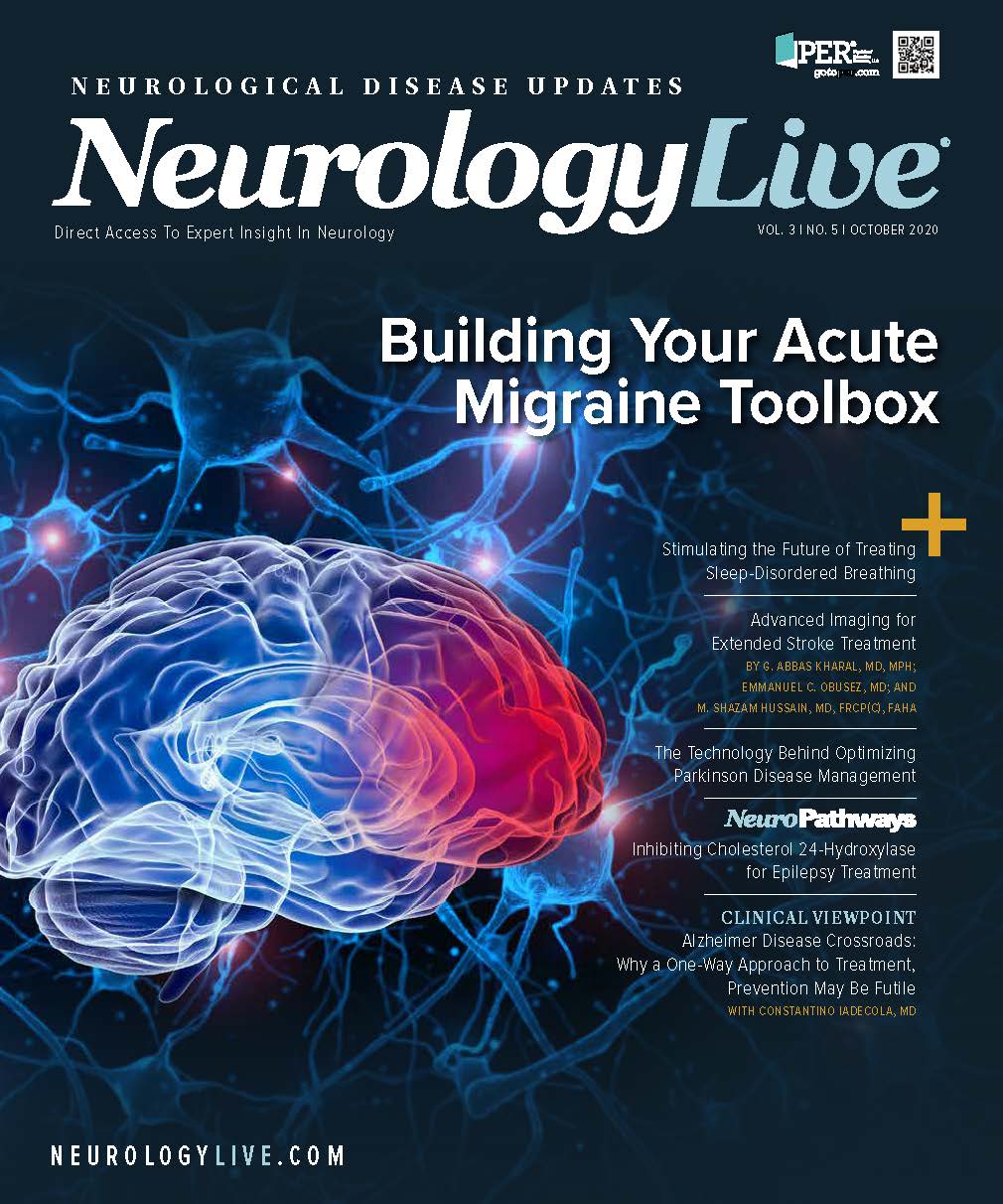Publication
Article
NeurologyLive
Alzheimer Disease Crossroads: Why a One-Way Approach to Treatment, Prevention May Be Futile
Author(s):
Constantino Iadecola, MD, discusses the interaction of vascular risk factors and the shortcomings of our current clinical approach to Alzheimer disease.
Costantino Iadecola, MD

As the world awaits what could be the first disease-modifying treatment for Alzheimer disease, research continues to point us in the direction of various therapeutic targets that could hold promise for prevention. No target is perhaps more promising than those embedded throughout the body—the very channels that circulate blood and oxygen to not only the brain but all other critical organs. Despite the fact that over 50% of cases of AD are attributable to a mixed pathology of vascular and Alzheimer-related factors, much of our therapeutic muscle has been thrown behind drugs that tend to target only a single AD pathology.
Although the idea of preventing such a devastating disease seems far off when we still have little grasp on our ability to actively treat it, a growing body of evidence suggests that a handful of simple “best practices”—maintaining a healthy weight, managing hypertension, staying physically active—might have a significant effect on AD risk reduction by ensuring a more healthy vascular system.
To learn more about the interaction of vascular risk factors and the shortcomings of our current clinical approach, NeurologyLive® sat down with Costantino Iadecola, MD, director and chair of the Feil Family Brain and Mind Research Institute, and Anne Parrish Titzell Professor of Neurology at Weill Cornell Medicine in New York, New York.
What is our current understanding of how amyloid-β impacts vascular function in the brain? How does this affect those who are genetically predisposed versus sporadic cases?
In people who have a predisposition to Alzheimer disease, there is evidence that as amyloid is being over produced in the brain, it is being removed by 2 vascular mechanisms, either because the amyloid kind of goes around the blood vessels and gets out of the brain through that route, or because it goes straight to the blood vessels and gets into the blood and is then being cleared. In familial Alzheimer cases, the problem is amyloid-β overproduction; there’s too much amyloid being made for the brain to clear. It’s [as if] the drain in the sink is working properly, but the water is turned on too high. In that case, amyloid also has an effect on blood vessels as it does on the neurons, by stunning the blood vessels and making them unable to deliver the oxygen and glucose and remove this waste. It’s going to promote accumulation because, even though the vessels per se are healthy, the amyloid is making them unhealthy and unable to do what they normally do. The evidence for this is indirect, but if you measure blood flow in patients with a familial risk of Alzheimer disease way before they become cognitively impaired, you already see a reduction in blood flow. So that suggests that there is something going on with the blood vessels before the brain gets really, really sick.
People with sporadic Alzheimer disease tend to be older, [and] have diabetes, high blood pressure, and other comorbidities that come with age. In this sporadic group, the problem is not that the faucet is turned on too high, but instead the drain is clogged; the vessels and older mechanisms are unable to remove the amyloid-β that is being made. In that case, it is even more important to keep the vessels healthy because that’s really what the problem is; it is an inability to kind of drain the amyloid-β and clear it from the brain.
All these things that come with aging—hypertension, diabetes, obesity, etc—are all harming the blood vessels and making them unhealthy. That unhealthy vessel is going to be less able to supply and nourish the brain with oxygen and glucose, and to clear all the waste that is being made, including amyloid. Although these are 2 different conditions, in both cases, maintaining the health of the blood vessels is key. If you’re a young person who is at risk of familial Alzheimer disease, stopping smoking and taking care of your diet is going to help you, and if you’re a 55-year-old man who is hypertensive and diabetic, you really should take care of your comorbidities because you will be better off. In both scenarios, you can make the case for helping the blood vessels to work better.
I think the geriatrician is really a critical element in this brain health clinic, where the health of the brain is going to be seen in the context of the health of the other organs of the body.
Based on this knowledge and our current therapeutic targets, is clearing amyloid-β from the brain enough, or should we be tackling treatment from multiple angles?
Theoretically, it would be easier to approach treatment of the familial forms of AD because we have drugs that block the ability of enzymes to cleave amyloid-β from amyloid precursor protein— we have gamma secretase inhibitors and beta secretase inhibitors. Unfortunately, it has not been as easy as it sounds, because these enzymes do other things that we are just learning now, so if you just shut down the enzymes, you can make things worse. Now we have modulators that do not shut the enzyme down completely, but just reduce certain aspects of the enzymatic activity. Those, I think, will have the maximum advantage, particularly in the familial cases, where overproduction is the main issue. The sporadic cases are much more complex and I don’t think that a single approach is going to work because if you look at the brain of someone who died of sporadic Alzheimer disease, they often have 5 or 6 pathologies at the same time, [such as] amyloid-β, tau, TDP-43, vascular dysfunction, [and] vascular alterations. You would want, somehow, to deal with a bunch of them at the same time. Now, the vessels are easy, because by adhering to a healthy lifestyle, you can better control the vascular risk factors. Because of recent emphasis on control of these risk factors, the mortality for cardiac attacks and strokes is going down 60% to 80%. We know how to do that, but we’re not doing it in the Alzheimer populations, because the idea so far has been, "Well, it’s a disease of the brain." But now we know more and we should really broaden our horizons and include the health of the vessels in any treatment plan.
In terms of prevention, what could we be doing better from both a patient education standpoint and increasing awareness among neurology and primary care providers?
I think your question raises a very important public health issue. At the research, tertiary referral level, where these huge dementia programs exist and the people who lead these programs are at the top of their field, if this vascular prevention approach is not done in [that environment], then how can we hope to [have this knowledge] trickle down...to the general practitioner, who is going to be the first person to see someone with Alzheimer disease? Bottom line, we have a lot of work to do. We are not empowering the general practitioner with all these things that we know, yet it’s very simple. The American Heart Association has a program called Life’s Simple 7 that is a guide to help keep your vessels healthy; stop smoking, treat your diabetes, treat your blood pressure, exercise, all of those things. There would be no harm in doing those things in the context of a dementia clinic or memory disorder clinic.
In an ideal world, we would have brain health clinics in which you’re going to have a cardiologist, a geriatrician, a neurologist, dietary specialists, etc, that work together on each case. I like to stress the role of the geriatrician because treating older people is not like treating a young person who has become old. Everything changes: Drugs have different interactions [and] dosages, the approaches are completely different, but that approach hasn’t really [arrived] there yet. I think the geriatrician is really a critical element in this brain health clinic, where the health of the brain is going to be seen in the context of the health of the other organs of the body. It could be that the person is going to need to pay more attention to the heart, for example, because maybe the reason why they are having memory problems is because the heart is not pumping enough blood. We have to better identify ourselves with this concept of multidisciplinarity and move away from parcellation of care. You should not hesitate to talk to your colleagues in other disciplines, and you should be aware that the brain is not really an isolated organ—it’s all part of the same thing.





